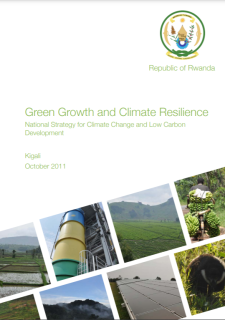Rwanda has seen significant economic development in recent years. Long-term vision, good governance and economic growth have made it attractive to foreign investors and ecotourism has taken off. Agricultural production has doubled since 2007, improving food security, mining has been privatised and contributes 38% of export earnings, and industry and services are expanding, providing off-farm jobs for the growing population. Development is also supported by increasing access to electricity. But Rwanda’s future socio-economic development is uncertain as its population grows and the climate changes, causing pressure on land, water, food and energy resources. Rwanda has the highest population density in Africa, and the population is growing at 2.8% per year. It is predicted that the population will more than double from 11 million today to 26 million by 2050.
Rwanda's national strategy for climate change and low carbon development details 14 programmes of action for the country in order to deliver on four strategic objectives:
- To achieve Energy Security and a Low Carbon Energy Supply that supports the development of Green Industry and Services
- To achieve Sustainable Land Use and Water Resource Management that results in Food Security, appropriate Urban
- Development and preservation of Biodiversity and Ecosystem Services
- To achieve Social Protection, Improved Health and Disaster Risk Reduction that reduces vulnerability to climate change

